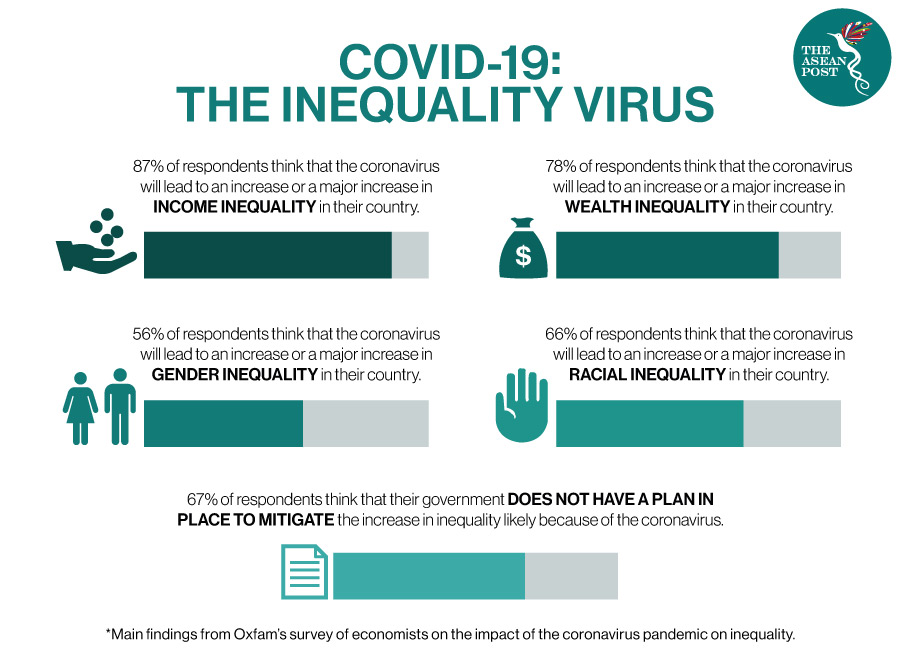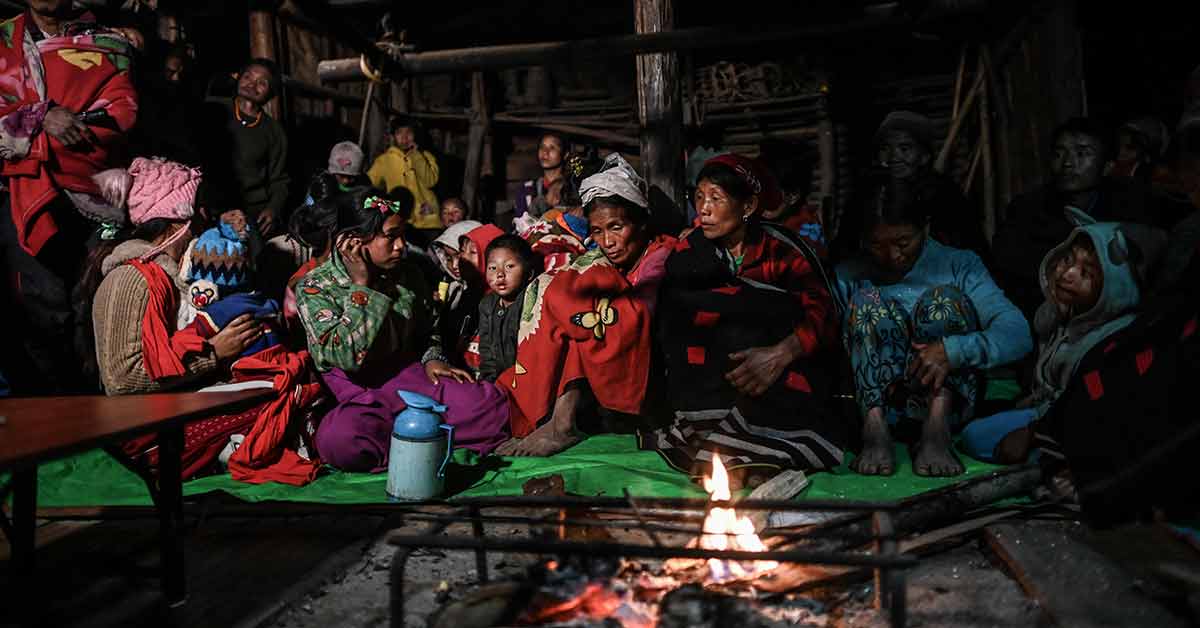Before the coronavirus pandemic, the world was already unequal. Hence activists and organisations fighting and marching for gender equality, equality of opportunity and education, among others.
However, COVID-19 has exposed and exacerbated global economic inequality – geographically and socially.
The health crisis has had a devastating impact on poverty levels and inequality. According to the United Nations (UN), an additional “207 million people could be pushed into extreme poverty by 2030 due to the severe long-term impact of the pandemic.” This would bring the total number to more than a billion.
While almost everyone has been affected in some way by the virus – women, the impoverished, elderly, disabled, and migrant populations have borne the brunt of the fallout from the pandemic. Moreover, minorities have also been hit harder and are recovering slowly from the downturn.
In a recent report titled, “The Inequality Virus” published by anti-poverty group Oxfam, it was found that the 1,000 richest people on the planet – mainly white men – recouped their COVID-19 losses within just nine months. Whereas it could take more than 10 years for the world’s poorest to recover; if at all.
Oxfam also noted that as the virus has had serious economic impacts on every nation at the same time, it is likely that almost every country will see an increase in inequality, the first time since records began. This view is supported by Oxfam’s survey of 295 economists from 79 countries including Jayati Ghosh, Jeffrey Sachs, and Gabriel Zucman.

Inequality Between Countries
It is not a secret that poor and least developed countries went into the pandemic with less well-resourced healthcare systems. This can be seen from the 2019 Global Health Security Index where it assessed global health security capabilities in 195 countries. Scored on preventing the emergence of pathogens, early detection, rapid response and mitigation, its health sector, commitments to improving national capacity, and risk environment to biological threats – the top 20 rankings were mostly occupied by high-income countries. Whereas the bottom 20 – the least secure - were made up of mainly low-income and lower-middle-income nations.
Other than that, poorer nations have also been hit by lost tourism revenue, lower remittances from locals working abroad, collapsing exports, and rising public debt.
In an article written by Economics reporter Valentina Romei, she said that rich countries have been better able to protect their economies from the effects of the coronavirus by “boosting public spending, leaving developing economies to struggle without the kind of co-ordinated global action that was prompted by the financial crisis over a decade ago.”
The International Monetary Fund (IMF) also stated that as the pandemic has increased inequality between nations and households, a decade of progress in reducing inequality has been wiped out in developing economies. The organisation also projected that income inequality across emerging and developing economies could rise to levels last seen in 2008.
Yesterday, the World Health Organisation (WHO) warned that the COVID-19 vaccine divide between rich and poor nations is worsening by the day.
"Rich countries are rolling out vaccines, while the world's least-developed countries watch and wait," lamented WHO director-general Tedros Adhanom Ghebreyesus. "Every day that passes, the divide grows larger between the world's haves and have nots.”
Rich Getting Richer, Poor Getting Poorer
Based on the aforementioned report by Oxfam, billionaires’ wealth worldwide increased by a staggering US$3.9 trillion between 18 March and 31 December, 2020. Their total wealth now stands at US$11.9 trillion, which is equivalent to what the G20 governments have spent in response to the pandemic. It is said that the world’s 10 richest billionaires have collectively seen their wealth increase by US$540 billion over that period of time.
While that happens, people living in poverty will become even poorer as a result of the pandemic.
Development Initiatives, as quoted by Oxfam, stated that “the poorest people in almost every country have seen their incomes fall due to the pandemic.”
More than two-thirds of the people newly forced into poverty will be in South Asia and in East Asia and the Pacific.
Other than the mentioned issues, the world has also seen a digital divide and inequality in the education system amidst the pandemic. It was reported that COVID-19 could result in millions of pupils, especially girls, at risk of dropping out of school.
The World Economic Forum (WEF) also pointed to a few ways the coronavirus is increasing inequality. Firstly, higher-paid workers are able to work from home while lower-paid blue-collar workers do not have such option. Other than that, a higher share of low-paid workers in essential services such as nursing, cleaning, and teaching are more likely to come into contact with infected people.
And lastly, lower-paid workers are more represented in sectors that have suspended activities such as hotels and tourism services.
The coronavirus has indeed worsened existing inequalities of wealth, gender, and race. However, Christine Lagarde, chief of the European Central Bank said that 2021 will be “the year of recovery,” adding that while renewed economic activity “seems to be a little bit delayed,” it “should not be derailed.”
Related Articles:
